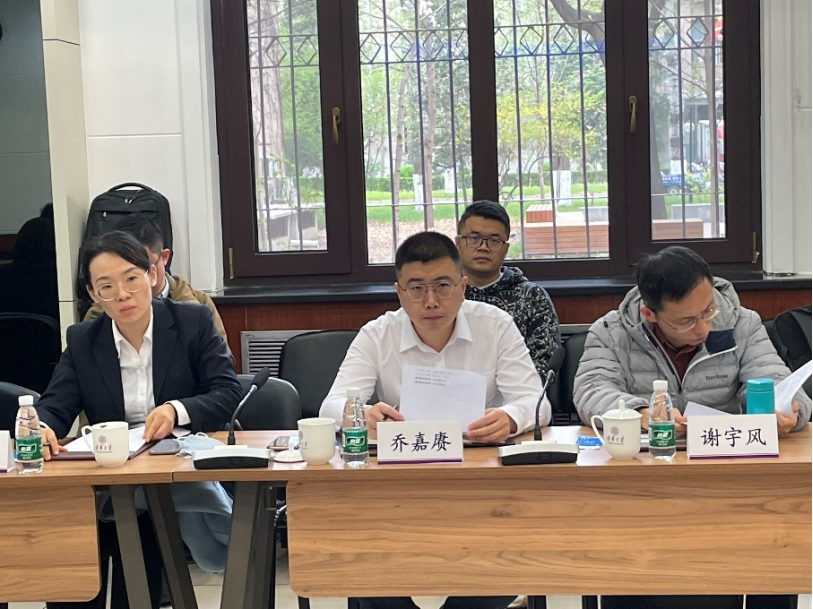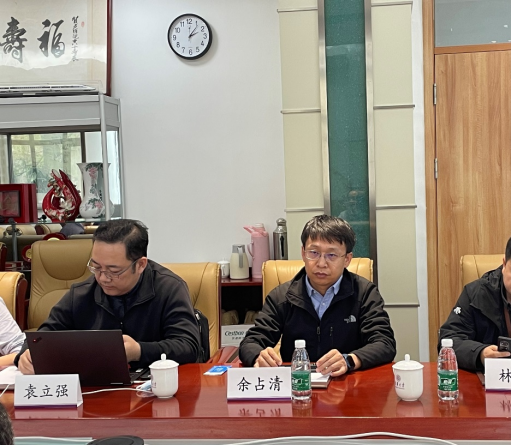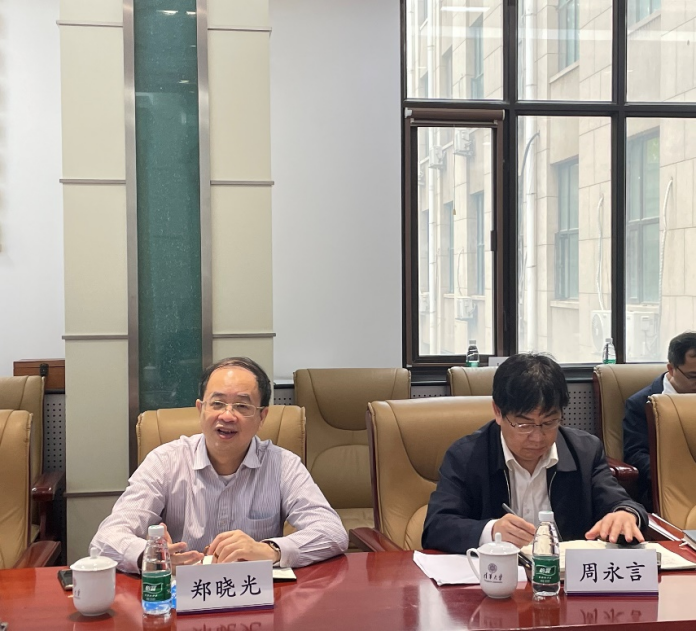On April 3, a delegation of 25 people from Guangdong Power Grid Co., Ltd., including Qiao Jiageng, General Manager of the Innovative Management Department, Xie Yufeng, full-time member of the Expert Committee, and Zheng Xiaoguang, Deputy Director of the Electric Power Research Institute, visited the Department of Electrical Machines and Applied Electronics (EEA) for research and exchange. They discussed the “Great Chinese” national innovation chain plan and explored various areas of in-depth cooperation.

At the meeting, Guangdong Power Grid Company firstly explained the intention and plan of building the “Great Chinese” national innovation chain. Qiao Jiageng said that the “Great Chinese” national innovation chain will be based on the natural advantages of the Guangdong-Hong Kong-Macao Greater Bay Area, where the population and load density are both high. The Greater Bay Area power grid is connected to the central and western power grids through “eight AC and ten DC” lines, and the DC feed-in scale reaches 32 million kilowatts, making it the most complex AC/DC feed-in receiving end power grid in the world. In addition, the Greater Bay Area not only has the world-class bay area power grid with the highest proportion of clean energy consumption, but also has vast development space for new energies such as wind power, photovoltaic power, and ocean energy, adjacent to the South China Sea. The plan to build a “Great Chinese” innovation chain will take advantage of the unique and leading characteristics of large-scale, strong frame, and low-carbon development in the Greater Bay Area power grid, and serve the national major strategies, focusing on industry and enterprise development strategies, focusing on a number of domestic and international cutting-edge fields, collaborating with domestic strong teams, planning a number of major directions, and forming new momentum and advantages in three to five years to improve the national strategic scientific and technological strength. The plan deeply implements the spirit of the 20th National Congress of the Communist Party of China, highlighting the core position of innovation in China’s modernization construction. Finally, Qiao Jiageng expressed his expectation to further cooperate with EEA and create a win-win development situation.

Yu Zhanqing, Deputy Dean of EEA, introduced the discipline layout, governance system architecture, and key development directions of EEA under the background of dual carbon, and emphasized the organized scientific research carried out based on the “one department, two institutes, one office and one alliance” structure. Cheng Lin, Deputy Director of the National Key Laboratory of New Power System Operation and Control, shared the latest scientific research progress of the National Key Laboratory. Gao Wensheng, Executive President of the Energy Internet Innovation Research Institute of Tsinghua University, highlighted the institute’s focus on research and consulting work in energy strategy and energy policy analysis, energy innovation planning and design, and providing solutions for energy internet technology engineering applications. Professor Hu Jun, Associate Professor Song Qiang, Associate Professor Lin Jin, Associate Professor Chen Lei, Associate Professor Ji Shiqi, Researcher Ci Song, Researcher Yuan Liqiang, Associate Researcher Zheng Jinghong, Associate Researcher Wang Bin, Assistant Professor Li Shisong, Assistant Researcher Qu Lu and some other teachers from EEA participated in the meeting and introduced the situation and key research directions of their respective research teams. They conducted preliminary discussions and exchanges around the cooperation with Guangdong Power Grid.

In the afternoon, the two sides conducted in-depth discussions on the “Planning, measurement, control, and operation of new power systems” and “New energy conversion, transmission and distribution”, and the topics included “Digital development-oriented power grid equipment, operation, maintenance and management”, “Accurate perception and prediction of power equipment status for smart grid”, “Power market and power-carbon coupling technology”, “Highly reliable and self-healing distribution grid”, “Quantum measurement technology and application”, “Development and utilization of new energies such as hydrogen energy”, “Large-scale and new energy storage technology”, “Medium-voltage DC distribution technology” and “Green environmental protection equipment and materials”, laying a good foundation for the technological cooperation on the “Great Chinese” innovation chain.

















 News & Events
News & Events